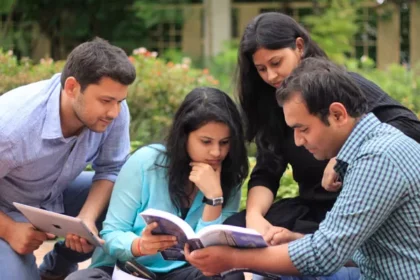For decades, the name “Goa” has conjured images of sun-drenched beaches and a vibrant, laid-back culture. It’s a global tourism icon, a place defined by its picturesque landscapes and unique heritage. But beneath this well-known identity, a profound transformation is underway. Goa is strategically evolving from a primary tourist destination into a burgeoning knowledge hub, positioning education as a fundamental pillar of its future prosperity.
This shift is not accidental. It is the result of a concerted effort involving significant government investment, key policy reforms, and a growing private sector dedicated to building a competitive and value-based education system. The state is now home to world-class institutions, a robust research ecosystem, and a clear vision for developing a skilled, future-ready workforce. For parents, educators, and visionaries, the narrative is changing: Goa is no longer just a place to visit, but a place to learn, grow, and build a future. This evolution is creating a vibrant landscape for all levels of education, including some of the best IB schools in Goa and CBSE schools in Goa.
The Pillars of Excellence: Leading Institutions and Global Recognition
Goa’s educational transformation is anchored by a diverse array of high-performing institutions. At the forefront is Goa University, a central pillar of higher education since 1985, serving over 33,000 students across numerous affiliated colleges. Its global standing is validated by a 601-650 ranking in the QS Asia Ranking 2024 and a “Very High” rating for its research output.
The private sector has been a crucial partner in this ascent. The BITS Pilani K.K. Birla Goa Campus, established in 2004, is a nationally recognized institution for engineering, holding a NAAC “A” grade and ranking 25th in Engineering by NIRF. Similarly, the Goa Institute of Management (GIM) consistently ranks among India’s top business schools.
This ecosystem is further strengthened by Institutes of National Importance like the Indian Institute of Technology Goa (IIT Goa) and the National Institute of Technology Goa (NIT Goa), which drive excellence in engineering and technology. In medicine, the historic Goa Medical College (GMC), established in 1842, remains a cornerstone of healthcare education in the state. This strong institutional foundation provides objective proof of Goa’s rising status, attracting high-caliber students and faculty and creating a self-reinforcing cycle of academic excellence.
A Strategic Vision: Government Investment and Future-Focused Policies
The Goan government is the primary architect of this educational renaissance, backing its vision with substantial financial commitments and progressive policies. The Goa Budget for 2025-26 earmarks a remarkable ₹2,100 crore for the education sector, a clear signal of its priorities.
A key driver of this strategy is the implementation of the National Education Policy (NEP) 2020, with an ambitious goal to achieve a 50% Gross Enrollment Ratio (GER) in higher education by 2035. The policy’s influence is reshaping the learning environment to be more holistic, integrating arts and folk arts to foster creativity alongside traditional academics.
To prepare students for the demands of the modern workforce, the government has launched several groundbreaking initiatives:
- Mandatory Internships: Beginning in June 2025, internships will become a compulsory requirement for graduation, a phased-in measure designed to bridge the gap between classroom theory and real-world industry skills.
- Coding and Robotics Education: An allocation of ₹19.91 crore under the CM-CARES scheme will establish centers of excellence for coding and robotics, equipping students with critical future-ready skills from an early age.
- Digital Literacy: Every government middle school will be equipped with laptops, and computer labs will be upgraded to ensure widespread access to technology.
These policies represent a deliberate effort to cultivate a highly skilled workforce, diversify the economy beyond tourism, and build a foundation for long-term economic resilience and growth.
The Synergy of Private Growth and Global Connections
The government’s vision is amplified by a thriving private education sector and a strategic focus on international collaboration. The expansion of private institutions is actively encouraged through supportive regulatory frameworks and incentives, such as the “DJ-GIFT” scheme that subsidizes fees for students in private engineering colleges. The proposed Parul University, slated to open in 2025, is a testament to the continued private sector confidence in Goa’s educational future.
This dynamic environment has created fertile ground for a diverse range of institutions, from world-class universities to innovative K-12 institutions. Leading CBSE schools in Goa and premier IB schools in Goa, such as Sunshine Worldwide School, are integral to this landscape, contributing to the state’s vision of holistic, value-based education that prepares students for a globalized world.
This global outlook is a hallmark of Goa’s top institutions, which have forged powerful international partnerships:
- Goa University is collaborating with Germany’s Leibniz Institute for Baltic Sea Research on the blue economy.
- BITS Pilani Goa is deepening academic ties with prominent Russian universities.
- The Goa Institute of Management (GIM) has a vast network of partners across Europe and the USA for student exchange and global immersion programs.
- The V. M. Salgaocar Institute of International Hospitality Education (VMSIIHE) has crucial partnerships with institutions in Portugal and Switzerland, offering students international internships and training.
- IIT Goa engages in research projects with the University of Minnesota, USA, and holds cooperation agreements with institutions in France and Portugal.
These collaborations enrich curriculums, provide students with invaluable international exposure, and elevate the quality of research, firmly integrating Goan education into the global academic community.
Building a Knowledge Economy for a Brighter Future
The ultimate goal of this educational overhaul is to create a more diversified, resilient, and intellectually vibrant Goa. While tourism remains a major economic pillar, contributing 16.43% to the state’s GDP, the strategic investment in education aims to reduce over-reliance on a single industry.
However, challenges remain. Despite a high per capita income, Goa has faced a significant unemployment rate, pointing to a mismatch between available skills and industry needs. The government’s focus on mandatory internships and vocational training through the National Skill Qualification Framework (NSQF) is a direct response to this skills gap, aiming to create a more employable workforce. The state also needs to address foundational issues, such as a high number of single-teacher schools and teacher vacancies, to ensure a quality pipeline for higher education.
The path forward requires a sustained commitment to bridging these gaps. By aligning curriculums with local industry demands, strengthening industry-academia linkages, and fostering a robust research culture, Goa can retain its top talent and ensure its “world-class” education directly benefits the local economy.
Conclusion: A New Chapter for Goa
Goa is authoring a new chapter in its story—one of intellectual capital, innovation, and human development. The transformation into a premier education destination is well underway, driven by the powerful synergy of government vision, institutional excellence, private investment, and global collaboration.
For families seeking an environment that offers not only a world-class lifestyle but also a world-class education, Goa presents a compelling proposition. The growth of excellent CBSE schools in Goa and globally-minded IB schools in Goa provides a strong foundation for the next generation. The state’s journey proves it is much more than a tourist paradise; it is a dynamic hub of knowledge and a land of opportunity, building a prosperous and sustainable future on the bedrock of education





